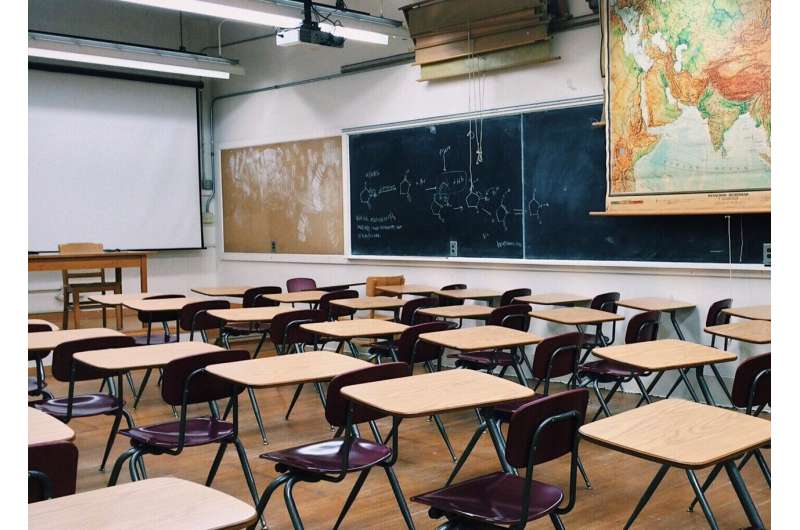Credit: Pixabay/CC0 Public Domain
Surrey's Global Center for Clean Air Research (GCARE) found that campaigns aimed at changing the behavior of parents, teachers and the local community can reduce outdoor nitrogen dioxide exposure by up to 23% compared to business-as-usual activities. However, the study's authors believe behavioral change campaigns should be more inclusive and should consider the school's diverse communities and the local population.
Professor Prashant Kumar, the corresponding author of the study and founding- Director of the GCARE at the University of Surrey, said, "Schools are going through lean times where every penny matters, and while some of the effective technologies in this study may appear unrealistic, the success of behavioral campaigns is clear from the evidence. Our study indicates that when local communities come together to raise awareness of air pollution, school exposure levels drop significantly.
"However, it is important that schools take into account the rich diversity of the school community, and their general local community. Health could be significantly improved and even lives saved through more air pollution awareness campaigns that target parents, schools and children, as well as business owners and the general public living around the school itself. Ideally this would be in addition to air-cleaning technologies—and those responsible for school and healthcare funding should act on this. But even in isolation a real difference can be made through community-based behavioral changes."
GCARE researchers conducted a comprehensive literature review of how several technologies, such as HVAC (heating, ventilation and air conditioning) systems, air purifiers, and also behavioral changes can impact the concentration of pollution particles in classrooms.
The study also highlighted that installing ventilation and air conditioning systems with high-efficiency filters could reduce by up to 30% the concentration of fine particulate matter in classrooms compared with ambient concentration.
Their study also pointed out that air purifiers are effective in reducing the concentration of harmful particles by up to 57% compared with no air purifier, and some were also able to reduce allergens, viruses and bacteria. Interestingly, indoor plants were shown to reduce volatile organic compounds by up to 73% compared with no indoor plants in the classroom.
Professor Kumar said, "If a school is fortunate enough to install many of these interventions, the big take away is that they should not be used in isolation. For example, air purifiers will not magically produce fresh air within a space. Therefore, a holistic approach to how these technologies and campaigns can work in a school context will be key to making sure that clean air is available to as many children as possible in the classroom."
This study has been published in the journal Science of Total Environment. This work builds upon GCARE's pioneering research around school guidance that has been released in more than 20 countries and numerous co-designed studies with schools.
More information: Nidhi Rawat et al, Interventions for improving indoor and outdoor air quality in and around schools, Science of The Total Environment (2022). DOI: 10.1016/j.scitotenv.2022.159813
Journal information: Science of the Total Environment
Provided by University of Surrey
























